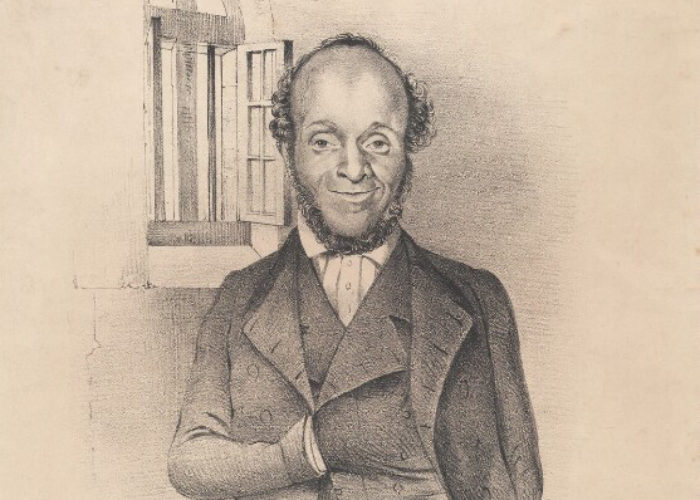Portrait of William Cuffay
Theme: Social and cultural revolution, Challenging law and order: British riots and reforms
William Cuffay was a leading figure in the Chartist movement of 1836-1848. This was a national movement which called for electoral reform and representation for working class people in Parliament. It was largely peaceful, but in times of stress was suspected of violent aims and methods. The original sketch for this print was made while Cuffay was confined in the notorious Newgate prison, awaiting transportation to Tasmania for allegedly planning an uprising against the British government.
William Cuffay (1788-1870) was born in Chatham in Kent. His father had been born into slavery in St Kitts, but had gained his freedom and settled in England after working as a ship’s cook. His mother was English. As a young man, Cuffay began working as a tailor’s apprentice, a trade he would stay in for his whole working life. In 1834 he joined his fellow workers in a strike, protesting against reductions in pay and long working hours, which cost him his job. In 1839 he helped to form the Metropolitan Tailor’s Charter Association and then joined the newly formed Chartist movement.
By 1848 Cuffay had been elected as leader of the London Chartists, and was a prominent figure. The Chartists wanted ordinary working men to have a voice in Parliament and for the electoral and political system to be more democratic. In 1838, they published their now famous People’s Charter, calling for six key reforms:
- All men over the age of 21 to have the vote (universal male suffrage)
- Voting should take place by secret ballot (to make sure individual votes could not be influenced by others)
- Parliamentary elections every year, not once every five years (to remove corrupt governments)
- Constituencies should be of equal size
- Members of Parliament should be paid
- Members of Parliament should not have to own property
Cuffay was involved in planning the famous Chartist rally on Kennington Common in 1848. While the rally was a success, attracting between 20,000 and 40,000 protestors, the plan to then march to Westminster to deliver a petition to Parliament had to be abandoned. Cuffay was frustrated at the lack of progress from the movement’s peaceful demonstrations and, allegedly, began to plan a more militant protest. He was arrested, along with several others, charged with planning an uprising and sentenced to transportation to Tasmania – a terrible punishment second only to hanging.
In 1856, Cuffay was granted a pardon but chose to stay in Tasmania, along with his wife who had joined him there. He began working again as a tailor and continued to campaign for political rights for the working classes. He also performed as a musician and singer. He died, in poverty, at the age of 82.
Did you know..?
The name Cuffay means ‘a boy born on a Friday’.
Use our Education activities to investigate this object and the theme of Reform further.
Highlights:
- Using objects, artworks and other sources to find out about the past
- Age of Revolution Top Trumps
- Enquiry: Why did workers protest in the Age of Revolution?
- How to make an interactive Revolutionary banner
- Twitter campaigns
And much more…
Sources & acknowledgements
This object description and its related educational resources were researched and written by our team of historians and education specialists. For further information see the item’s home museum, gallery or archive, listed above.
- Related resources
- Enquiry Questions
-
Did you know..?
The name Cuffay means ‘a boy born on a Friday’.
-
Education overview
You can access a range of teachers resources related to this object and more on our education page.
Please also see our glossary of terms for more detailed explanations of the terms used.
-
Curatorial info
- Originating Museum: National Portrait Gallery
- Accession Number: NPG D13148
- Production Date: 1848
- Creator: William Paul Dowling
- Material: paper
- Size: 308 mm x 215 mm
- Original record
-
Use this image
You can download this image for personal and educational use but please take note of the license type and rights holder information.
- Rights Holder: National Portrait Gallery
- License Type:



